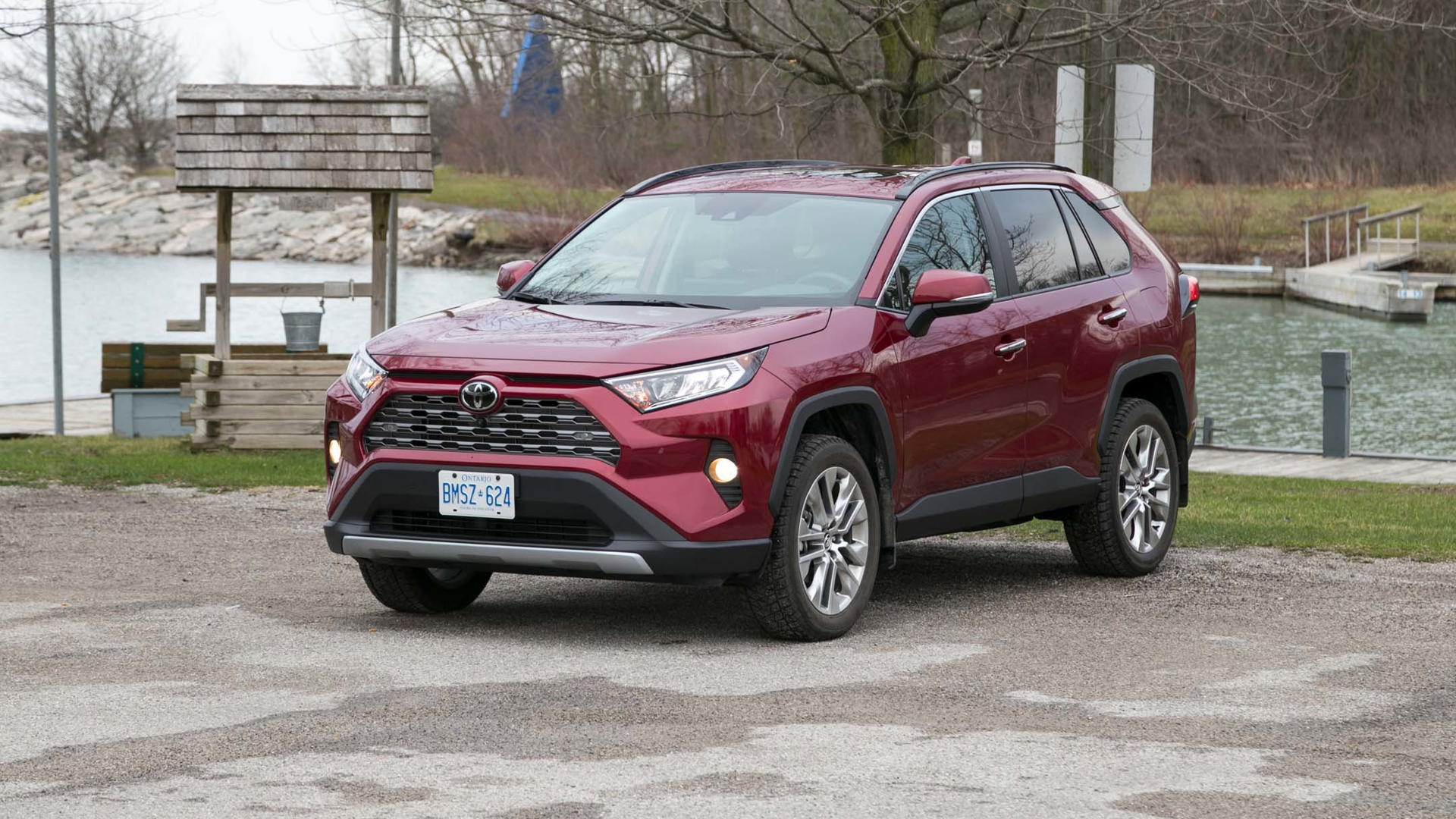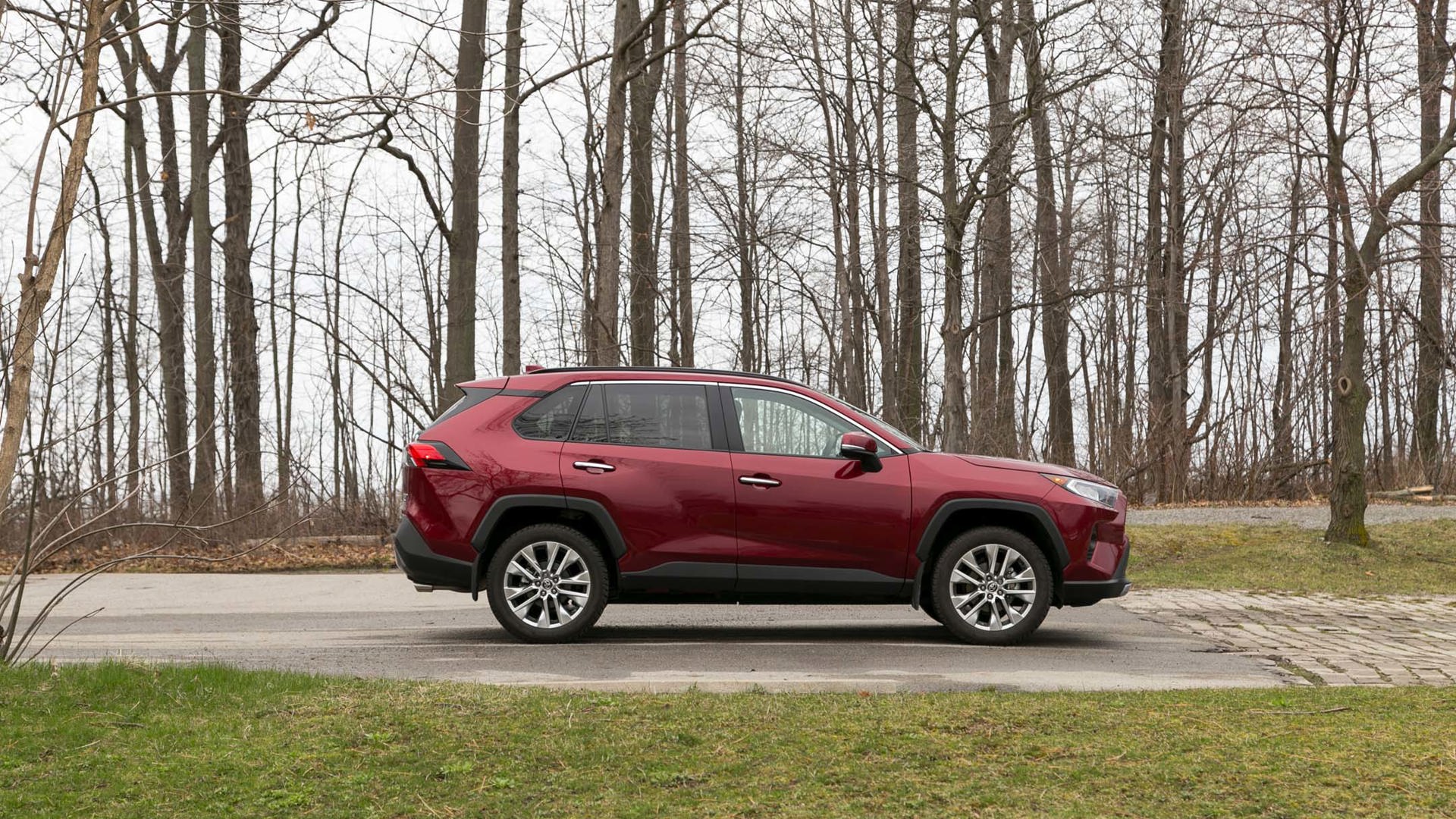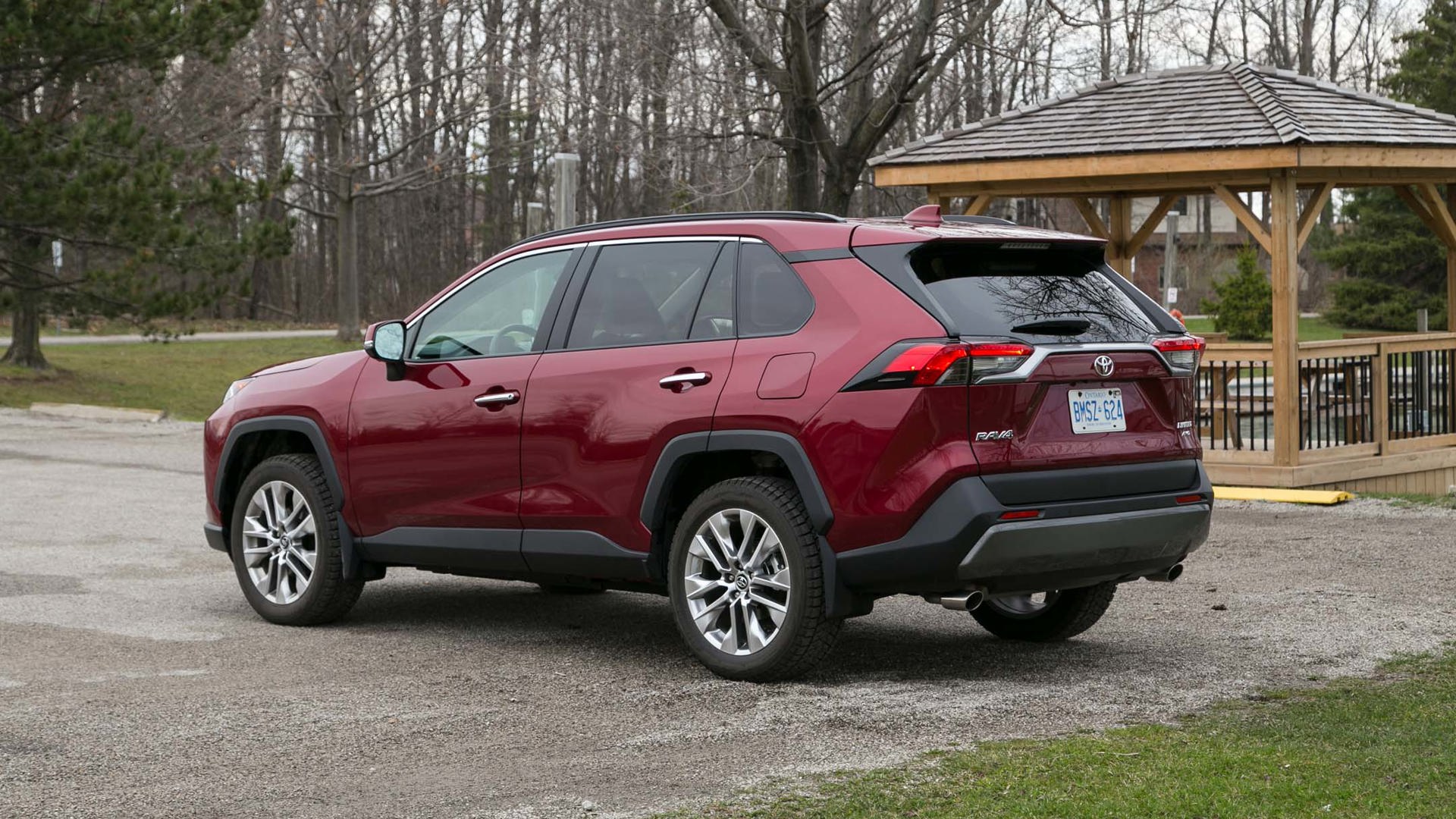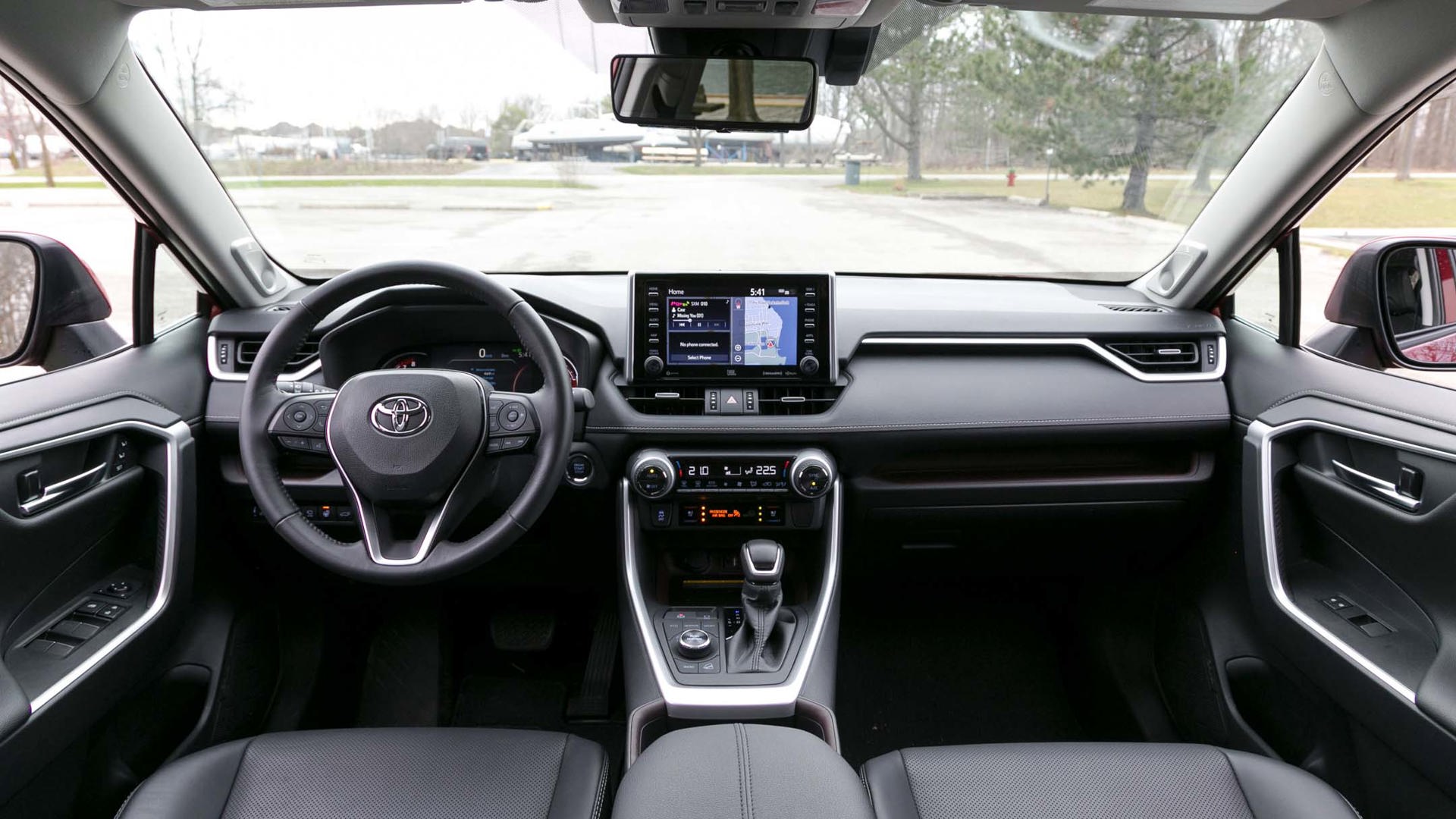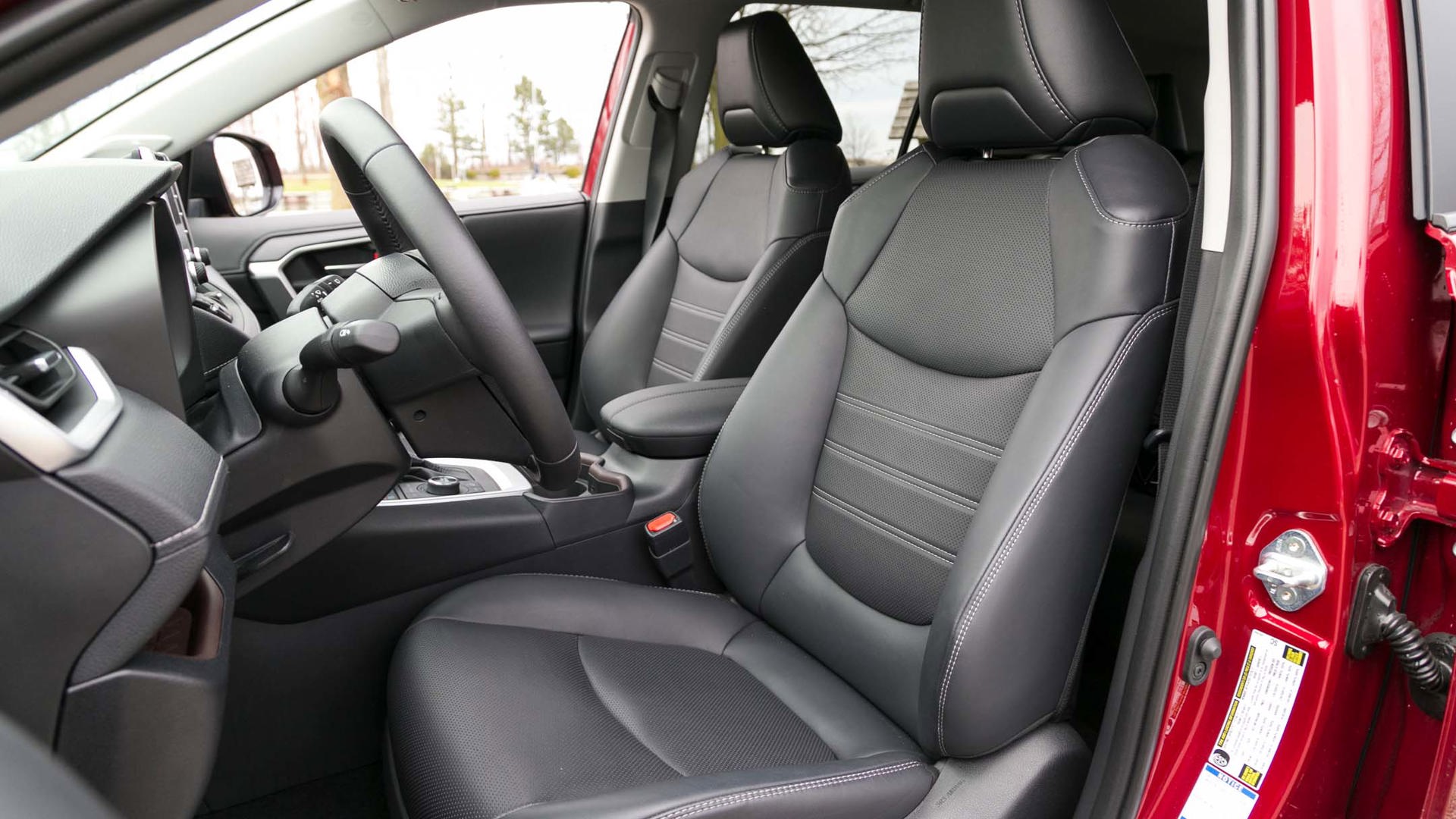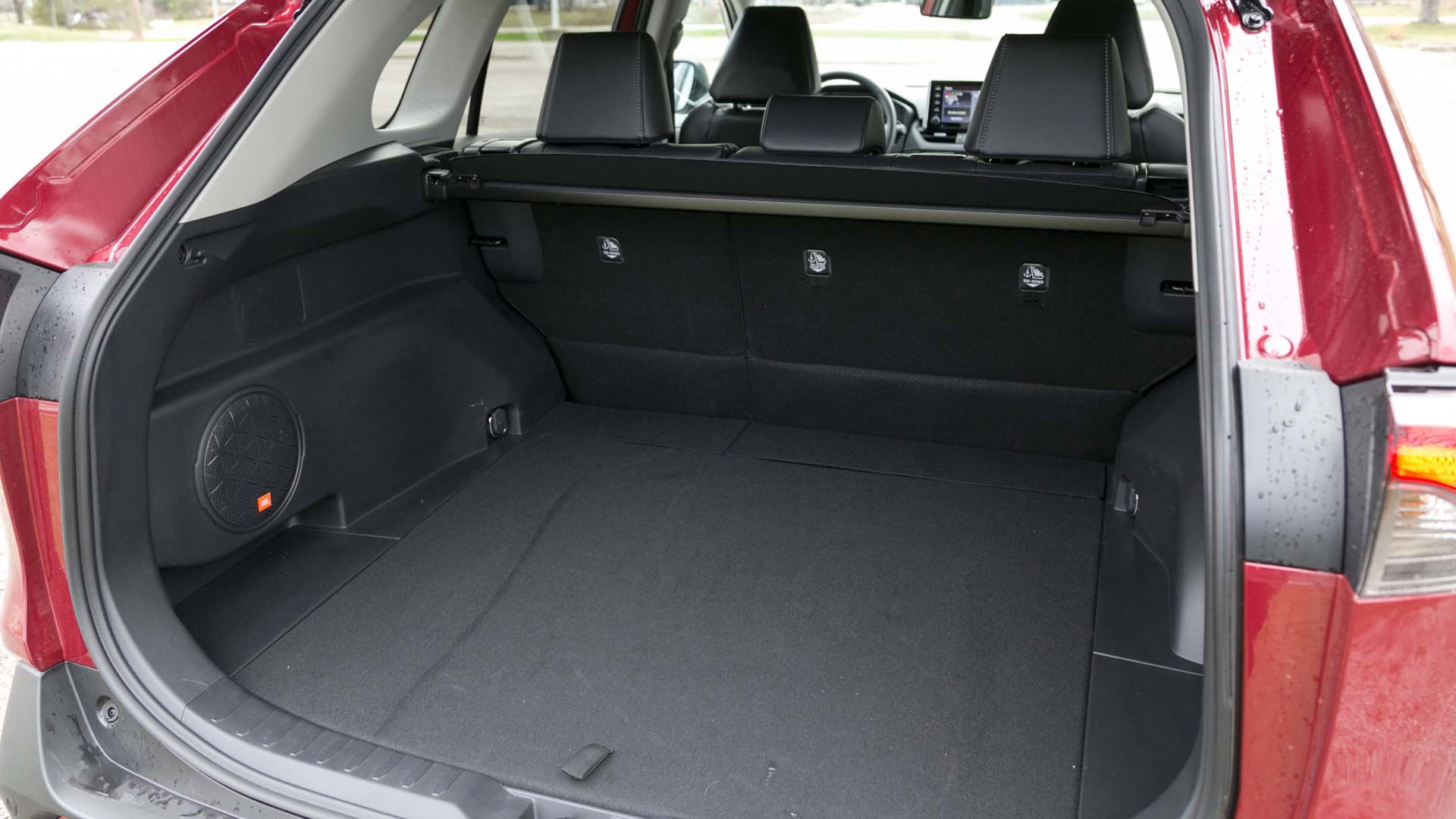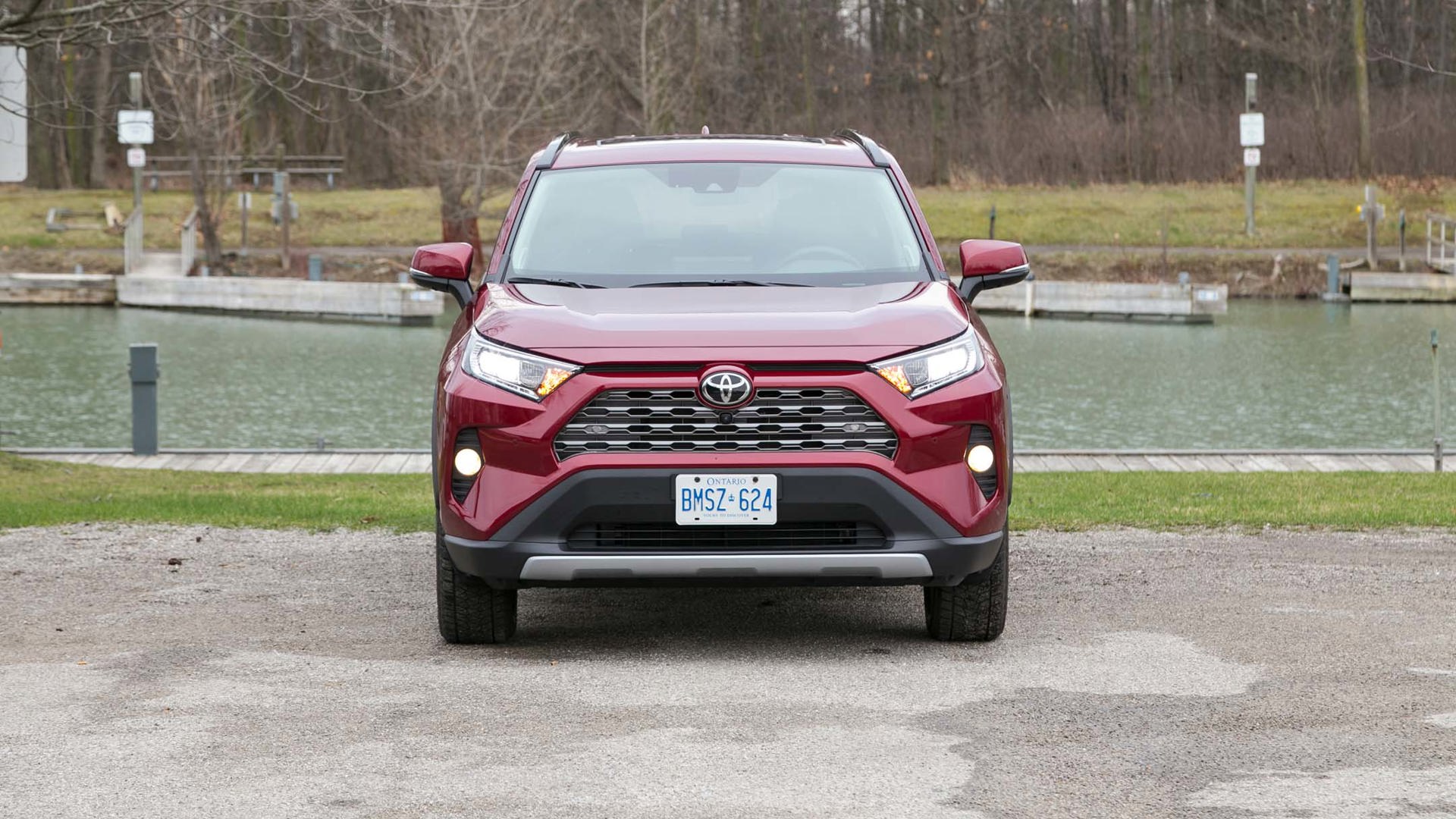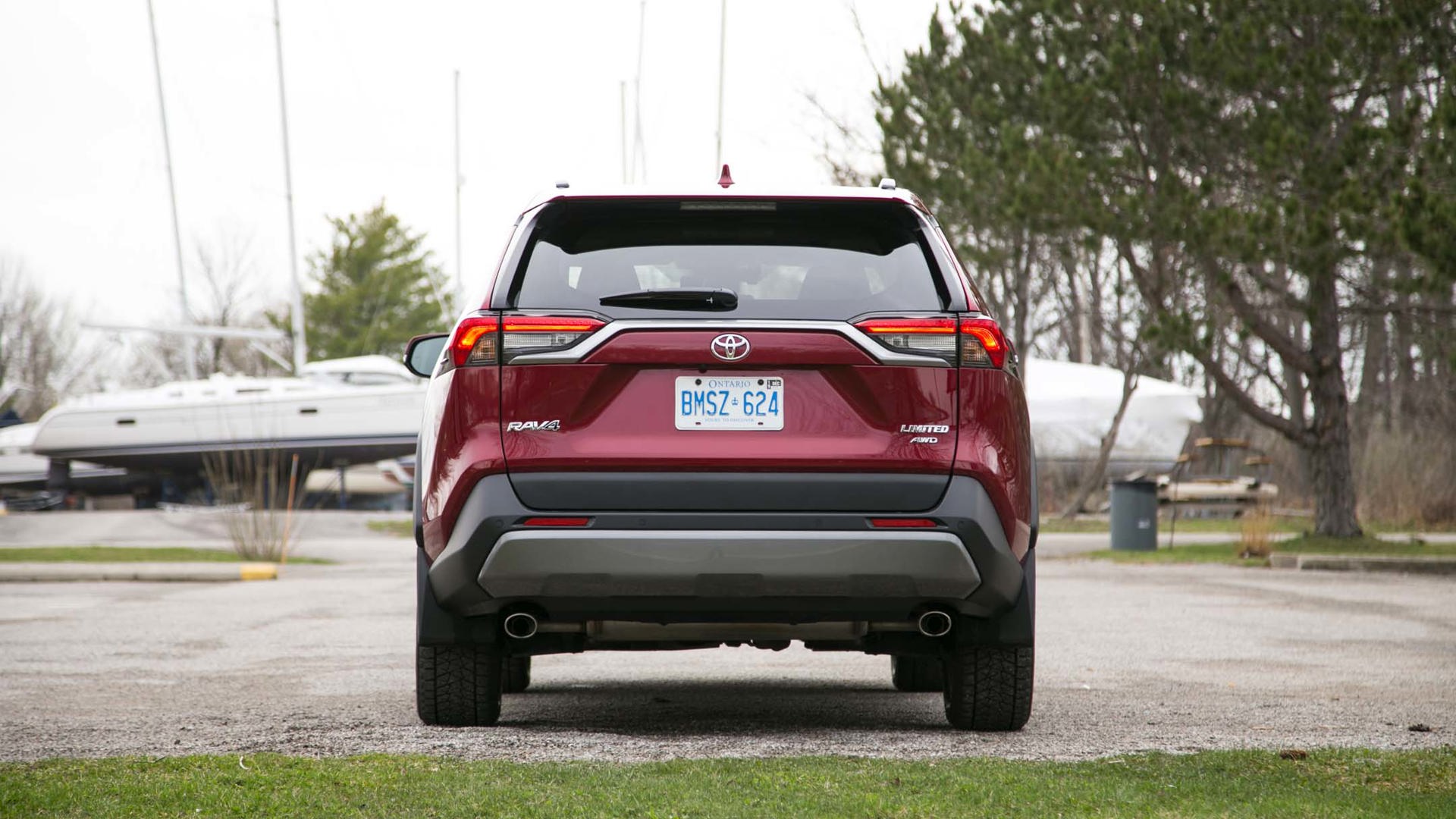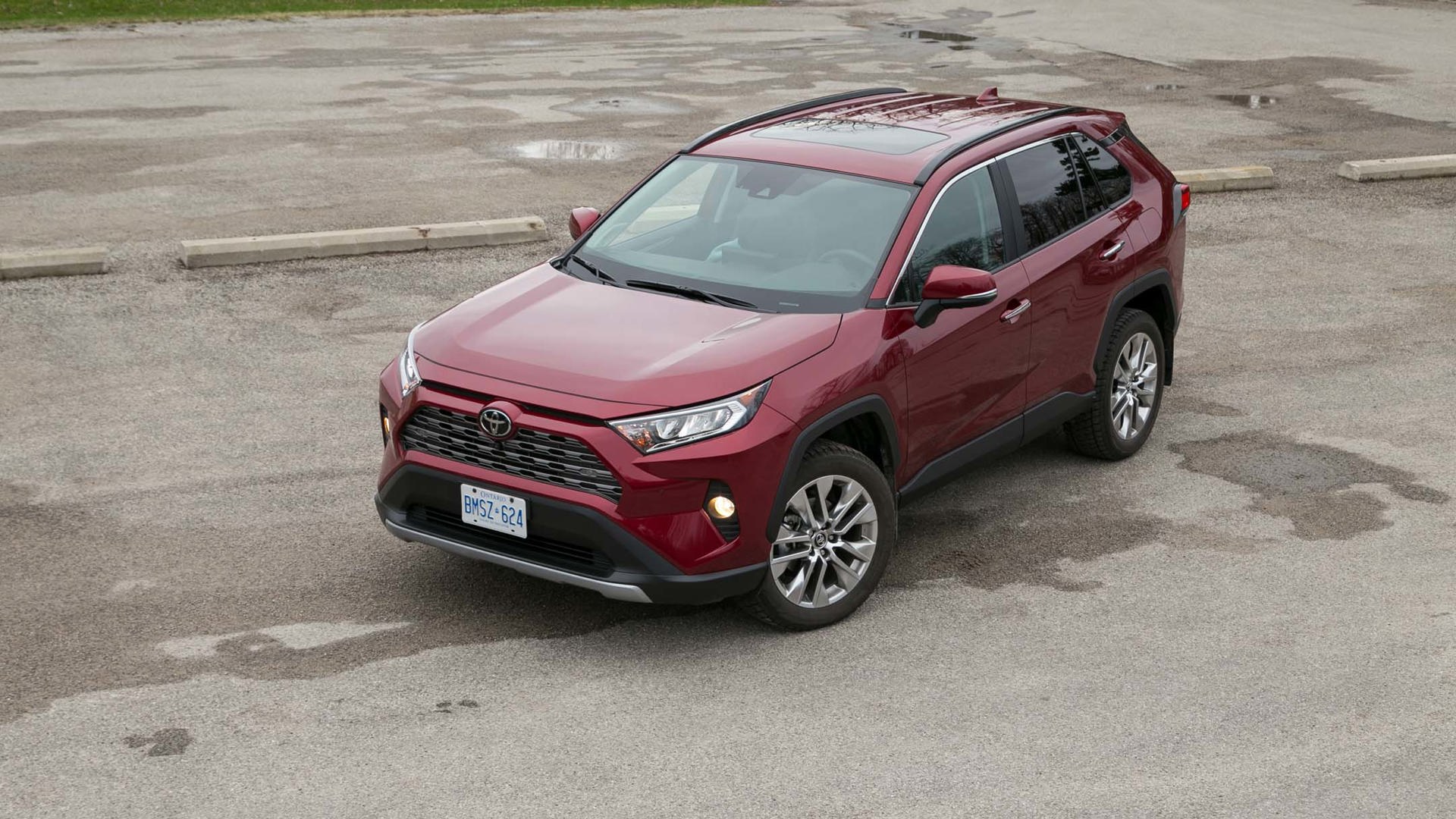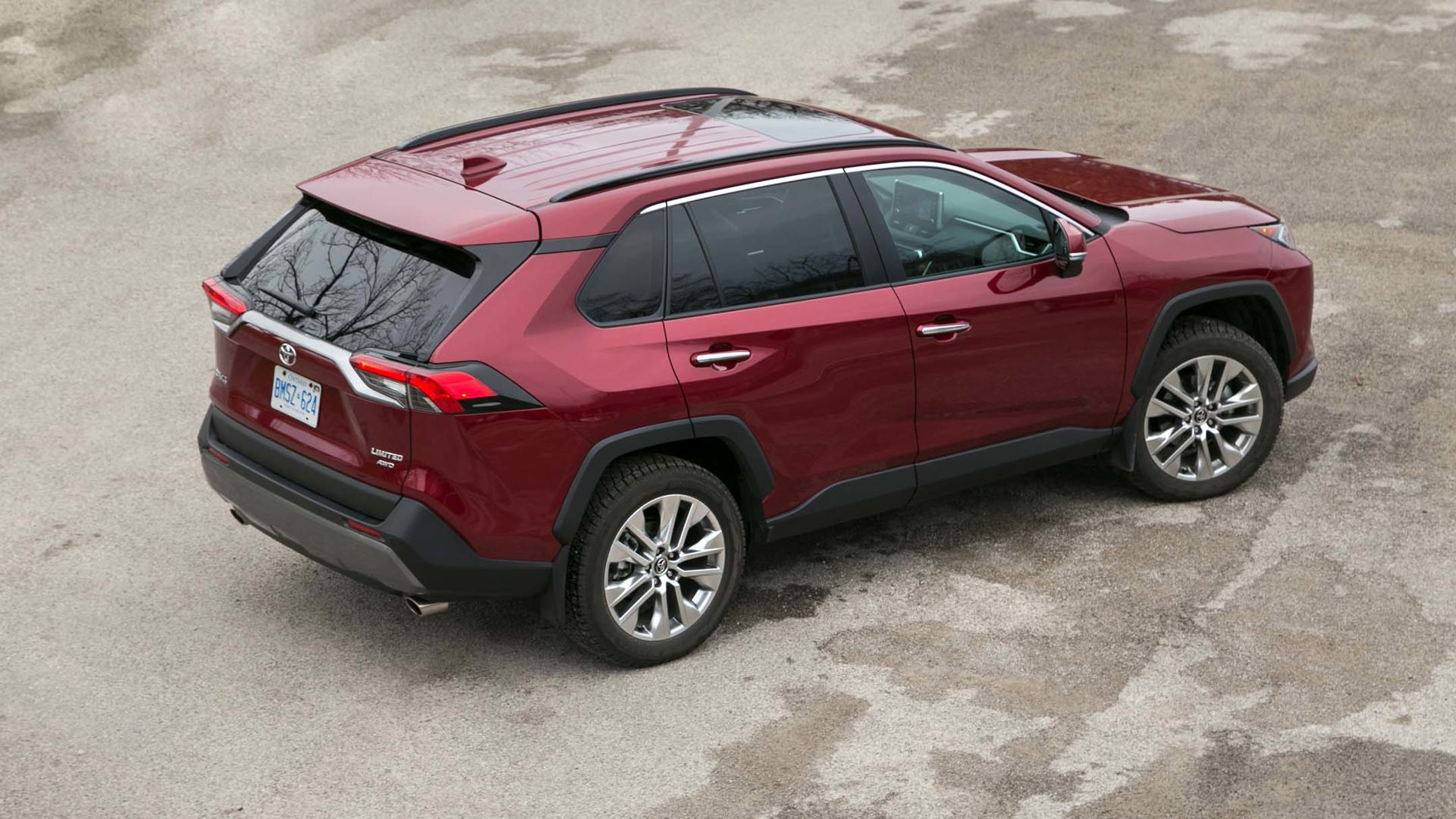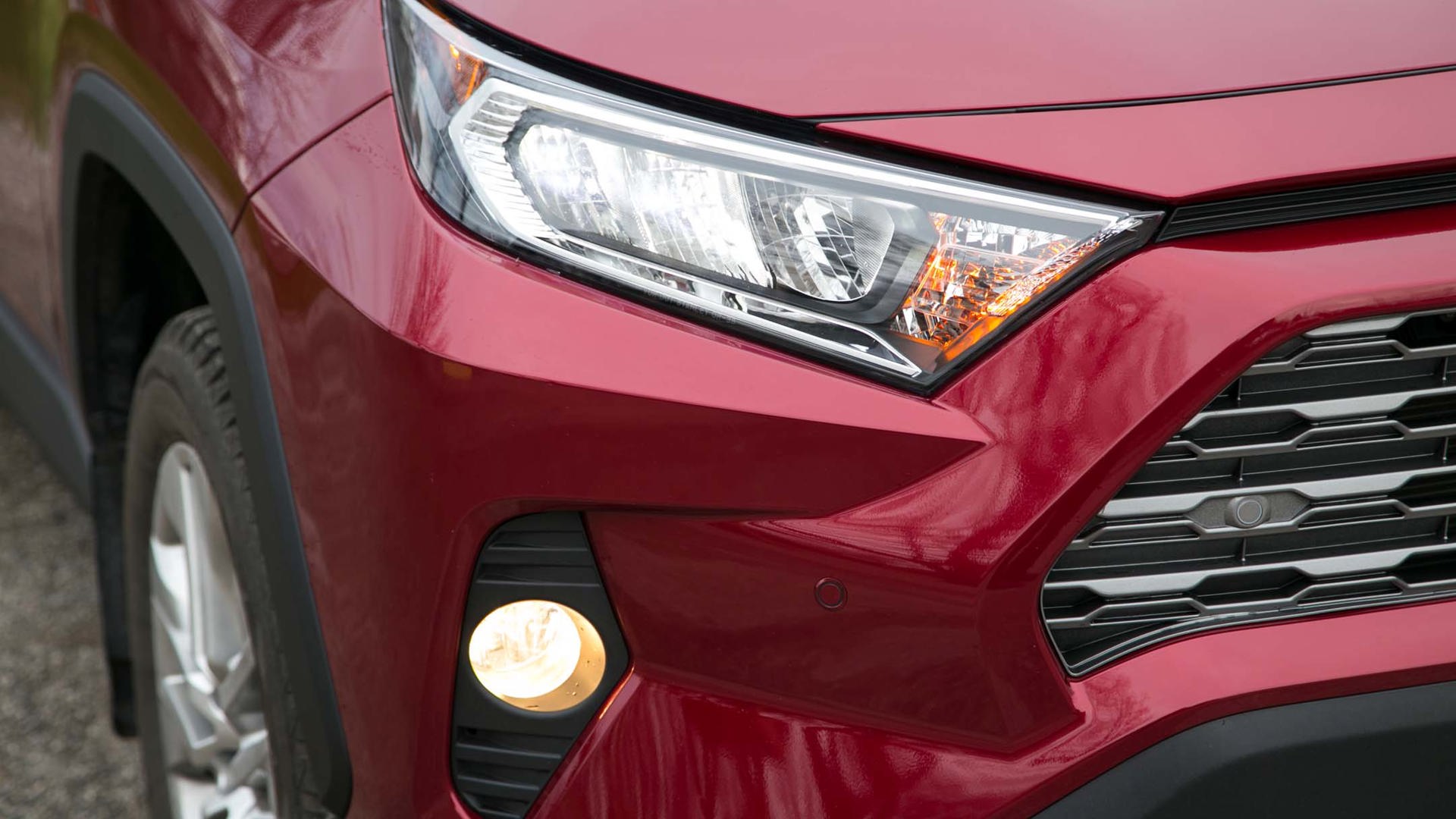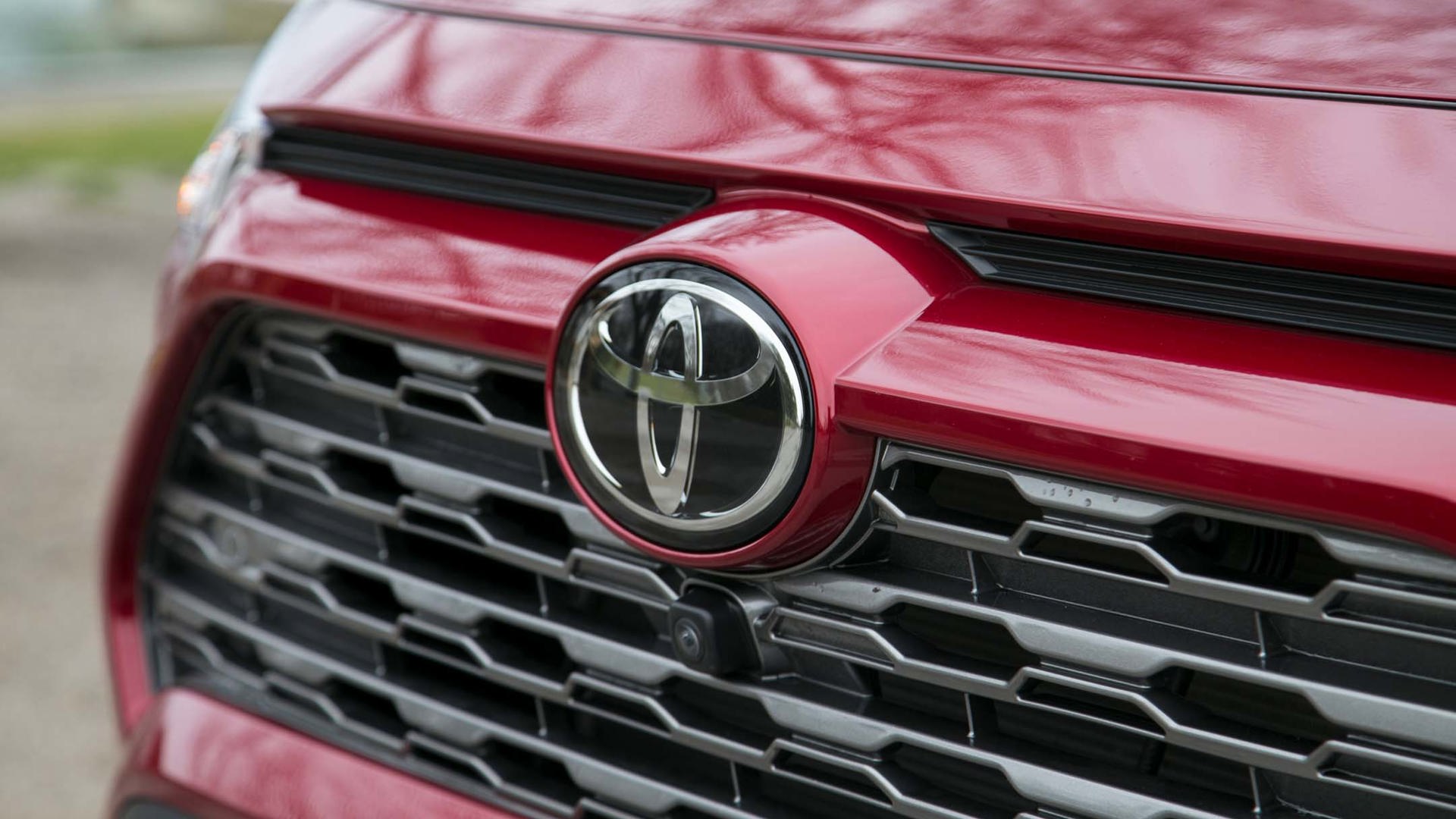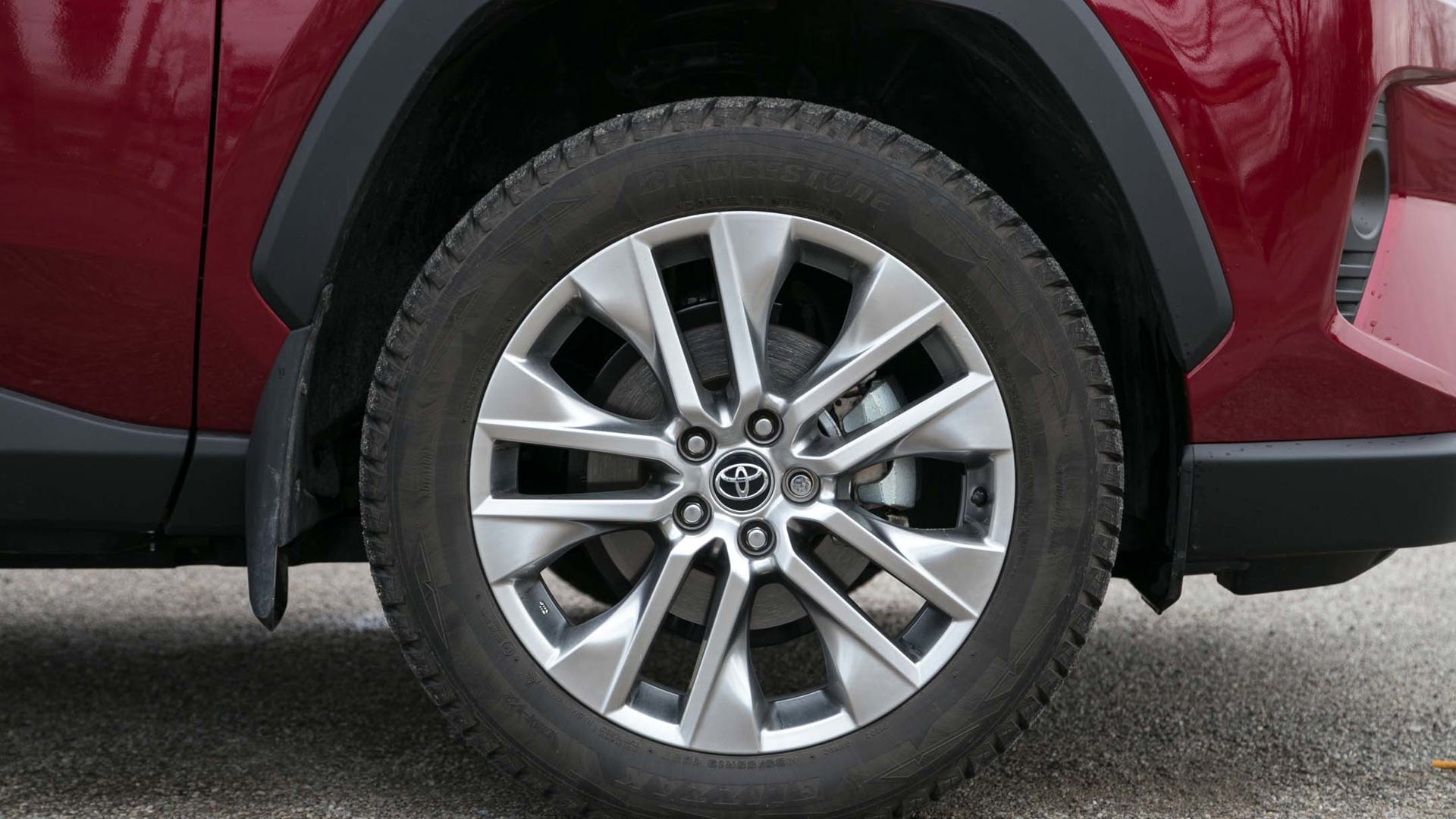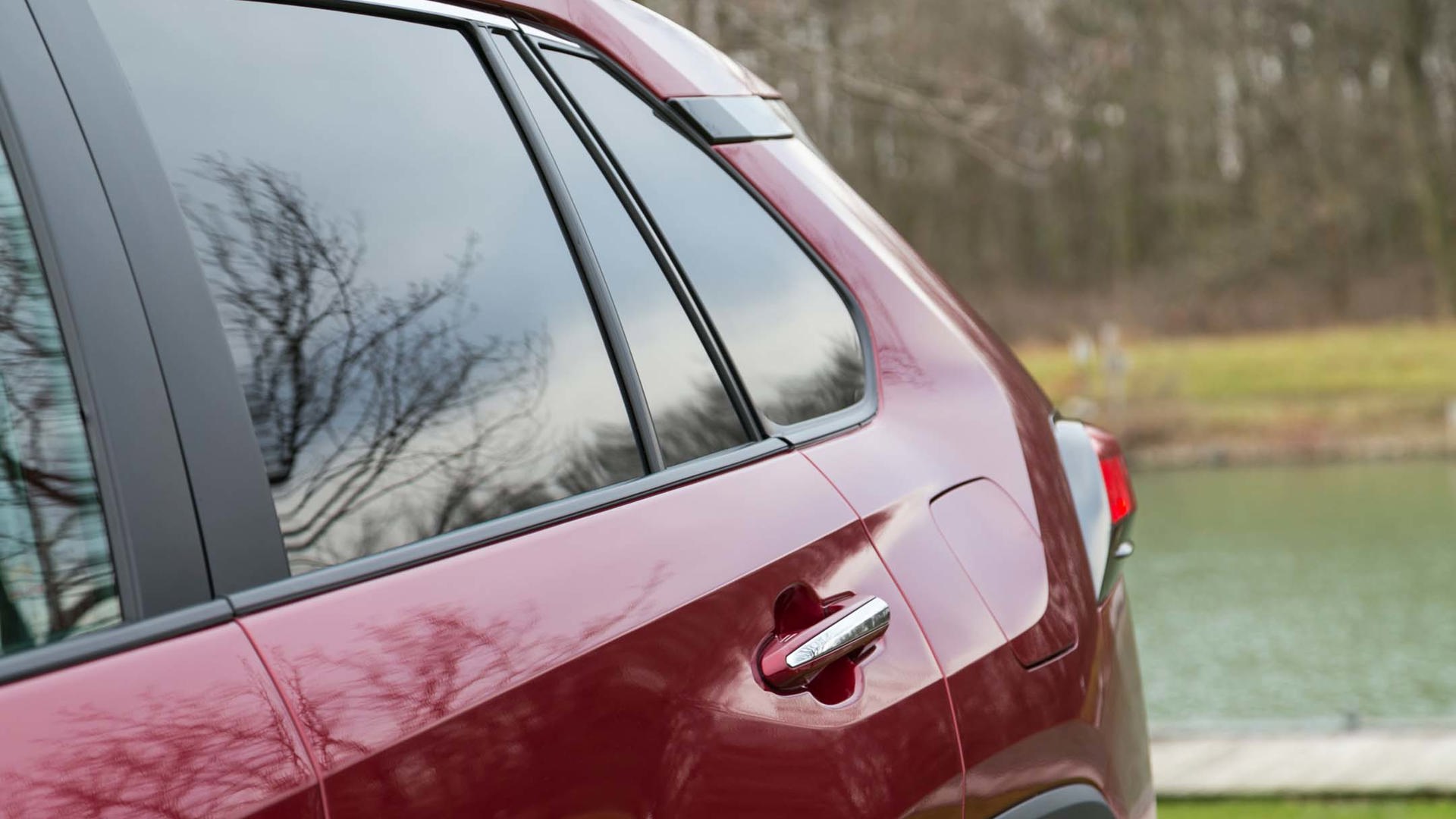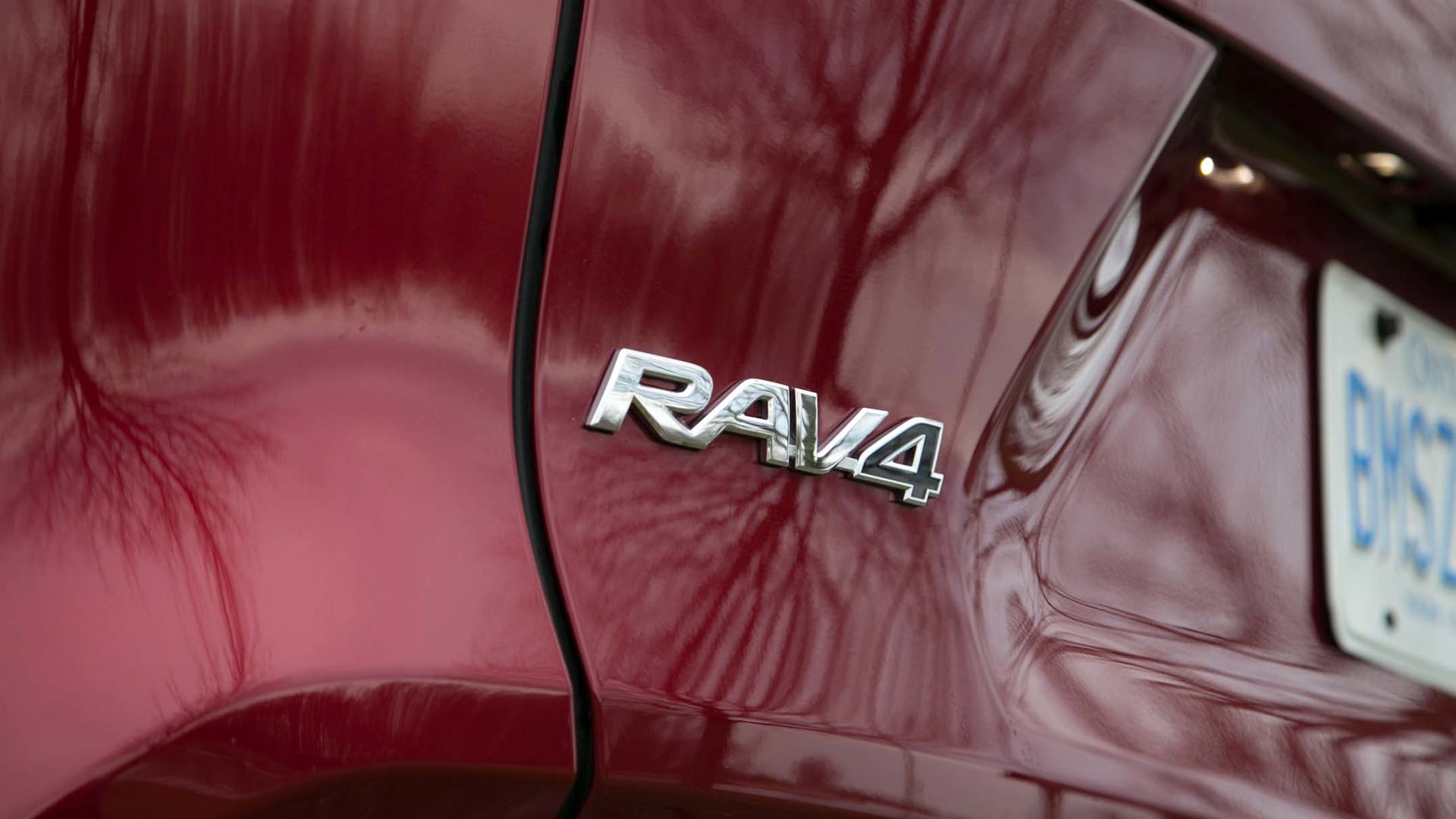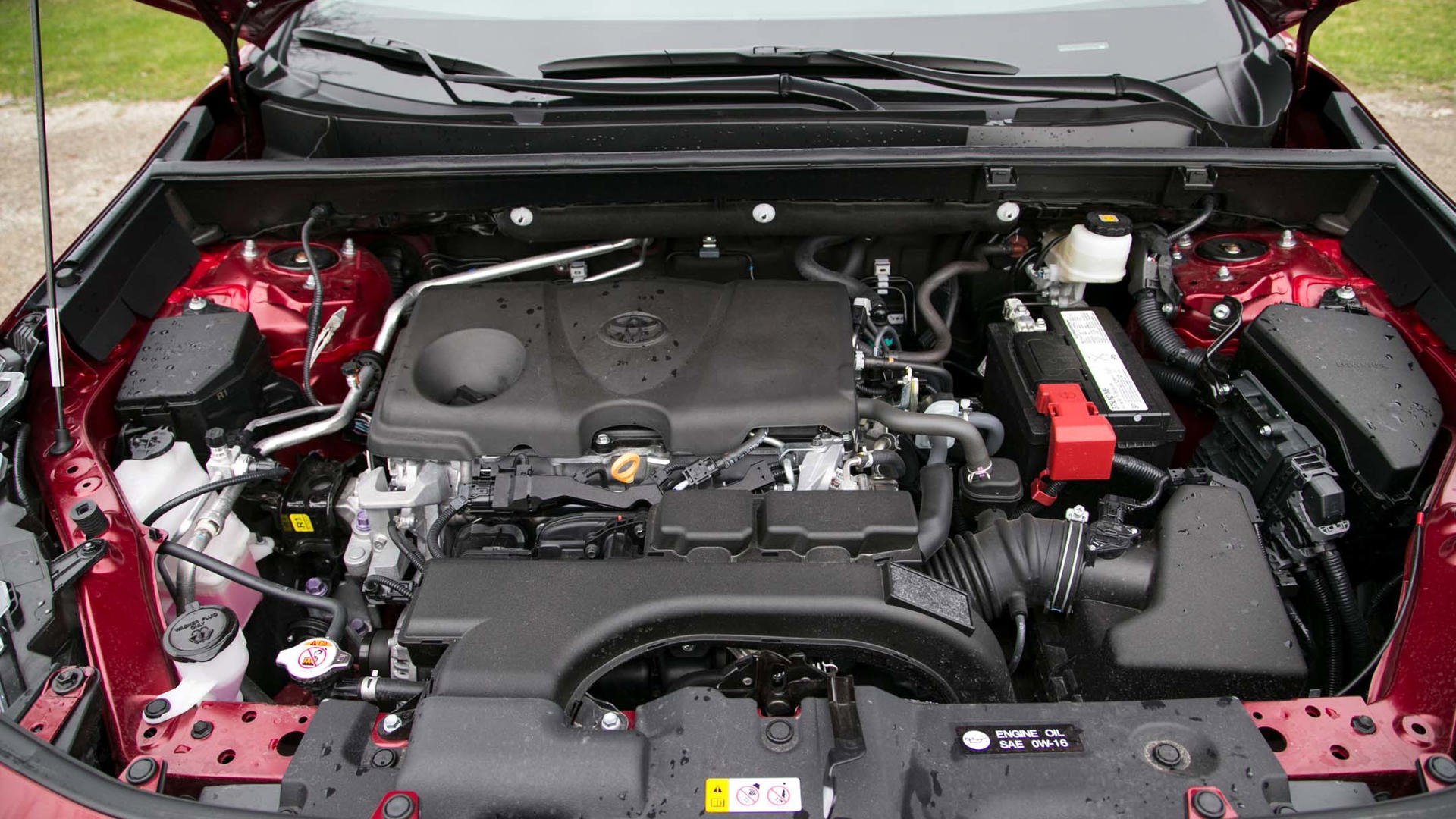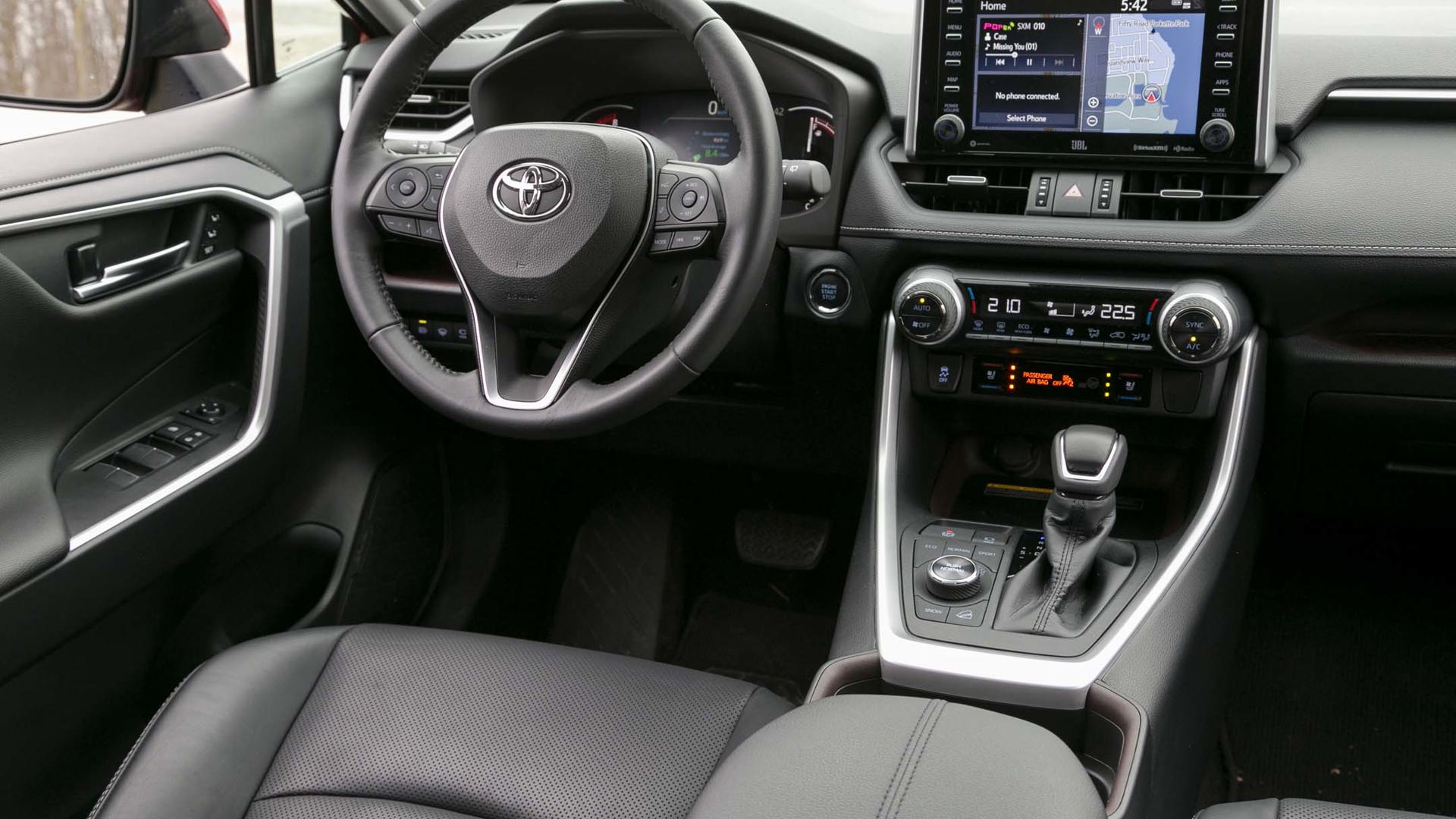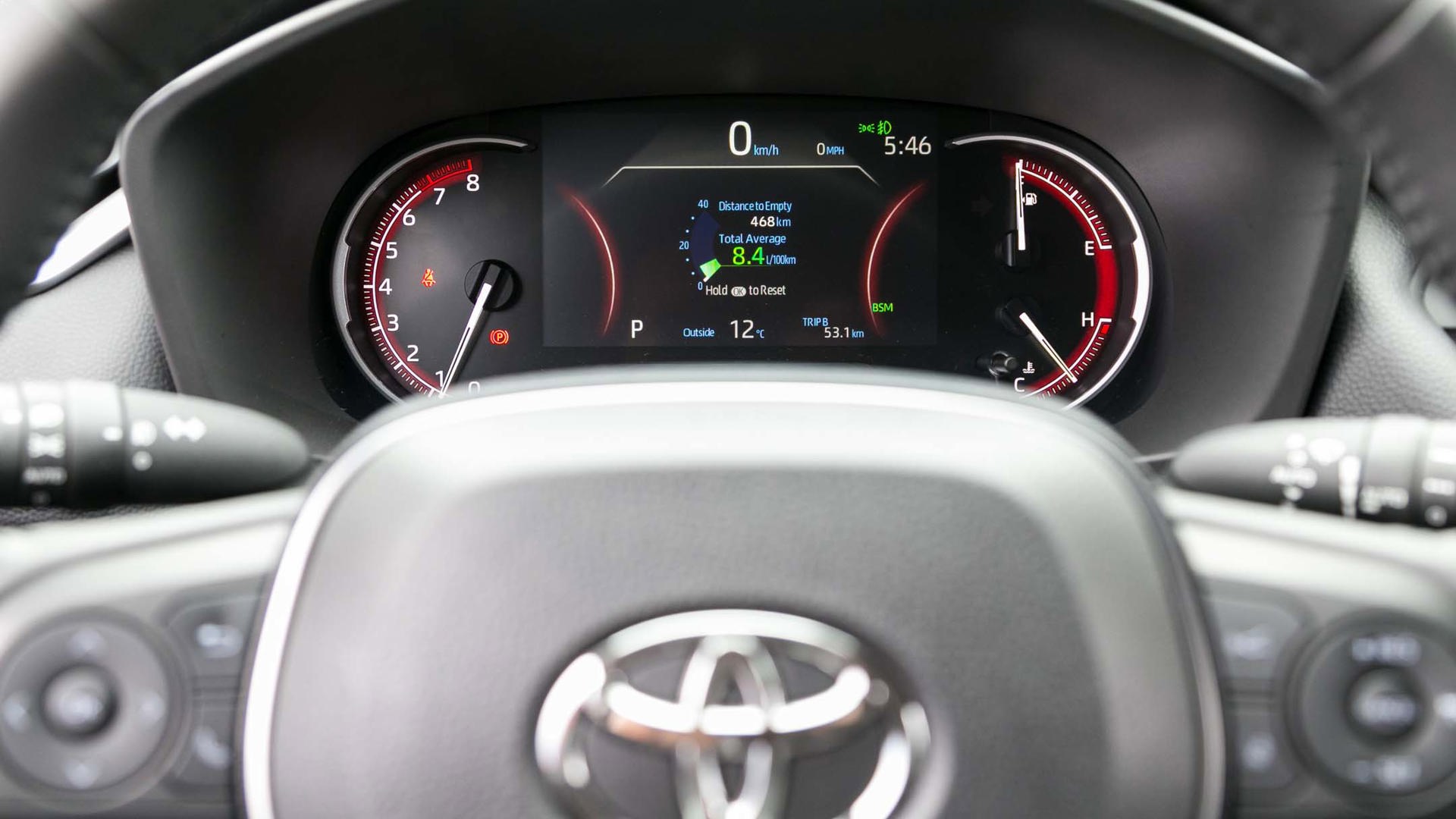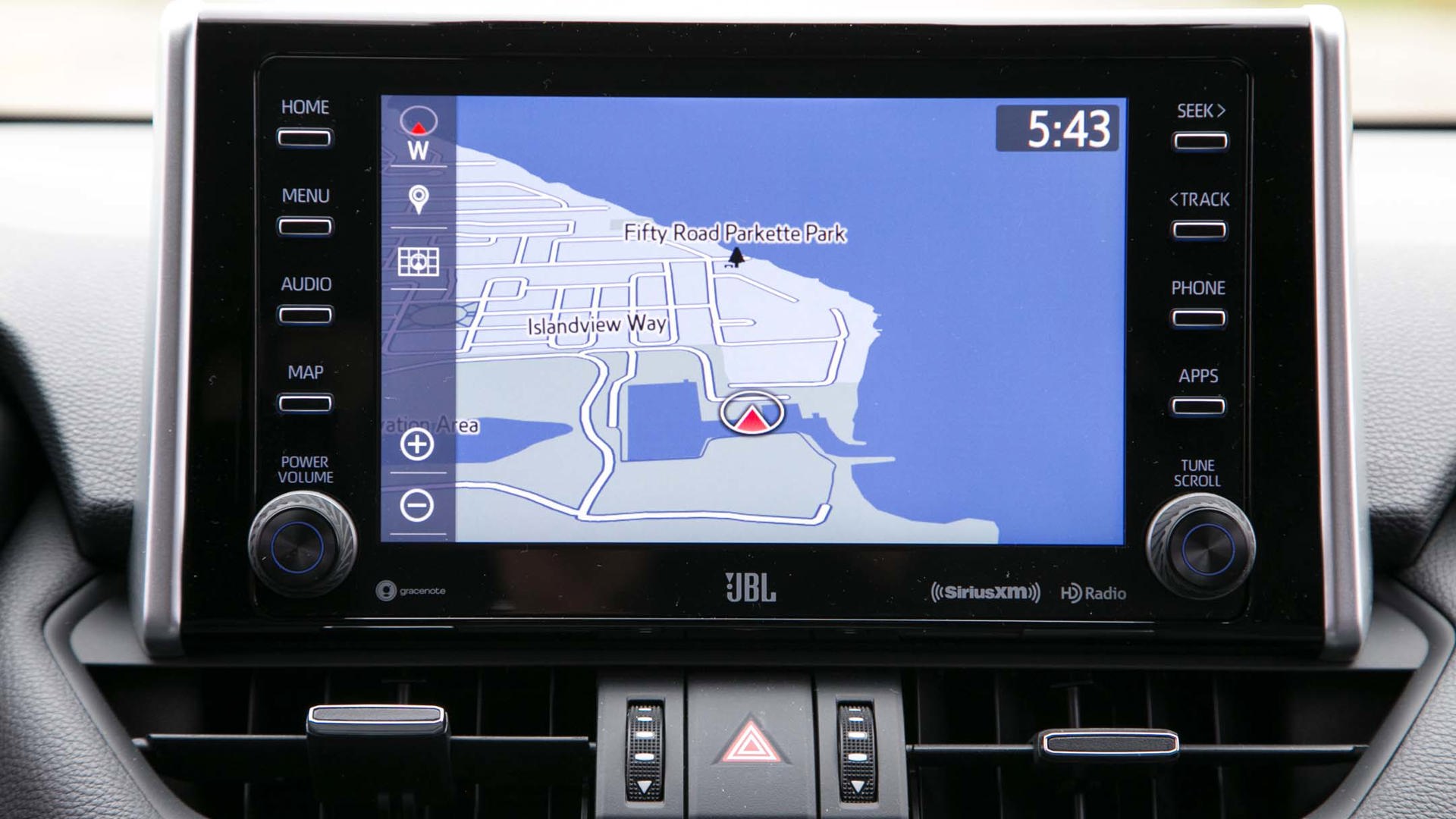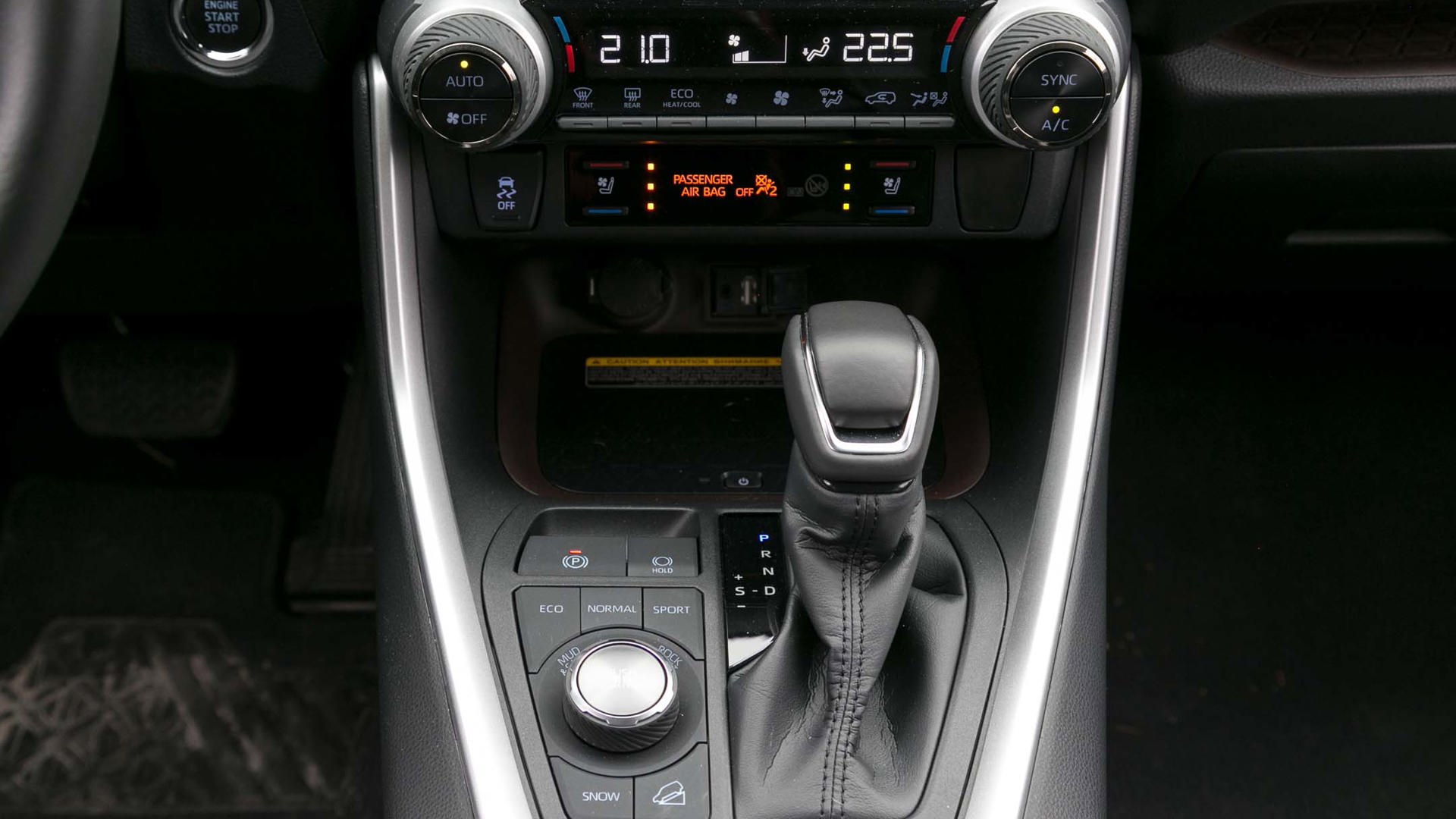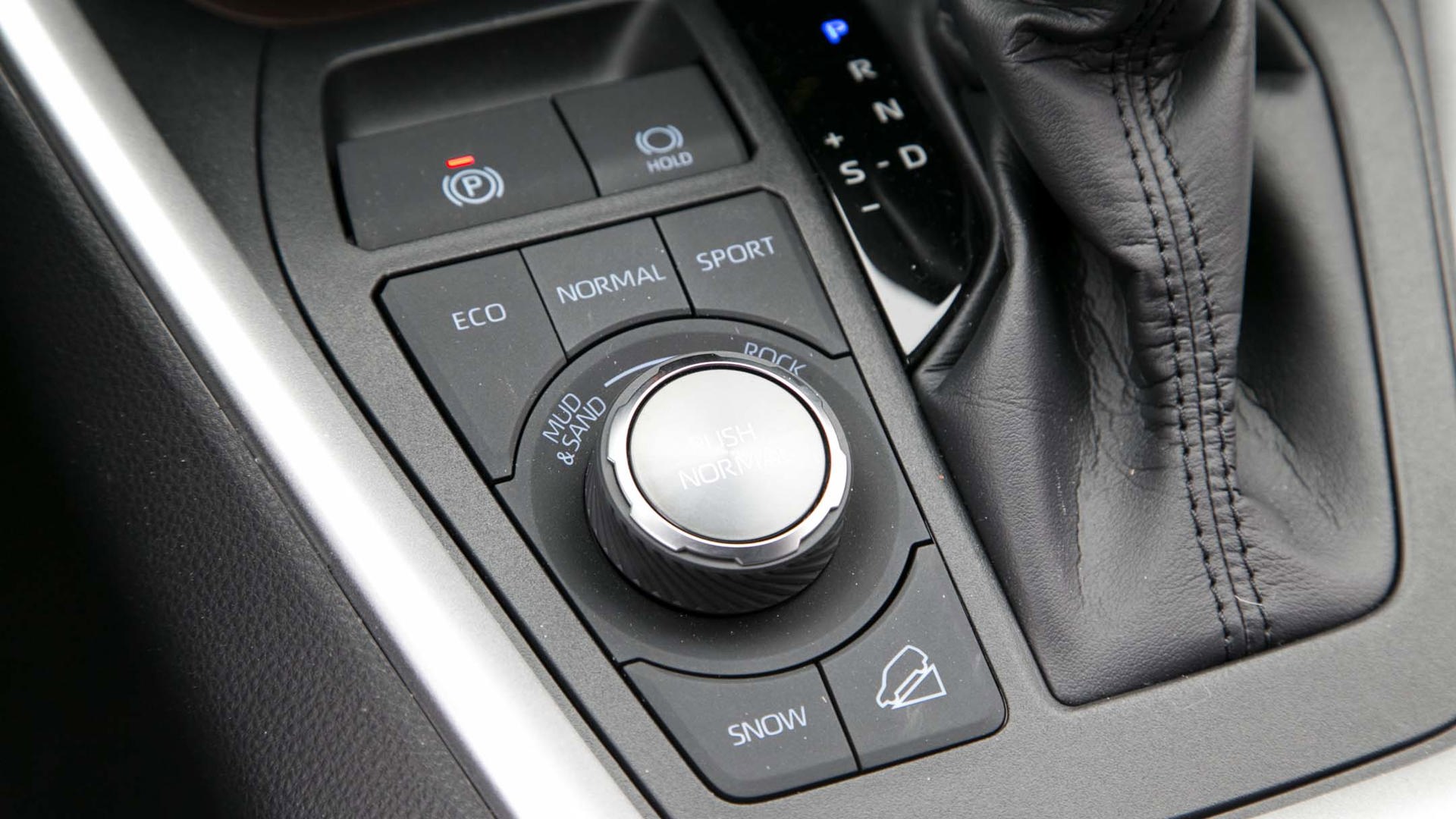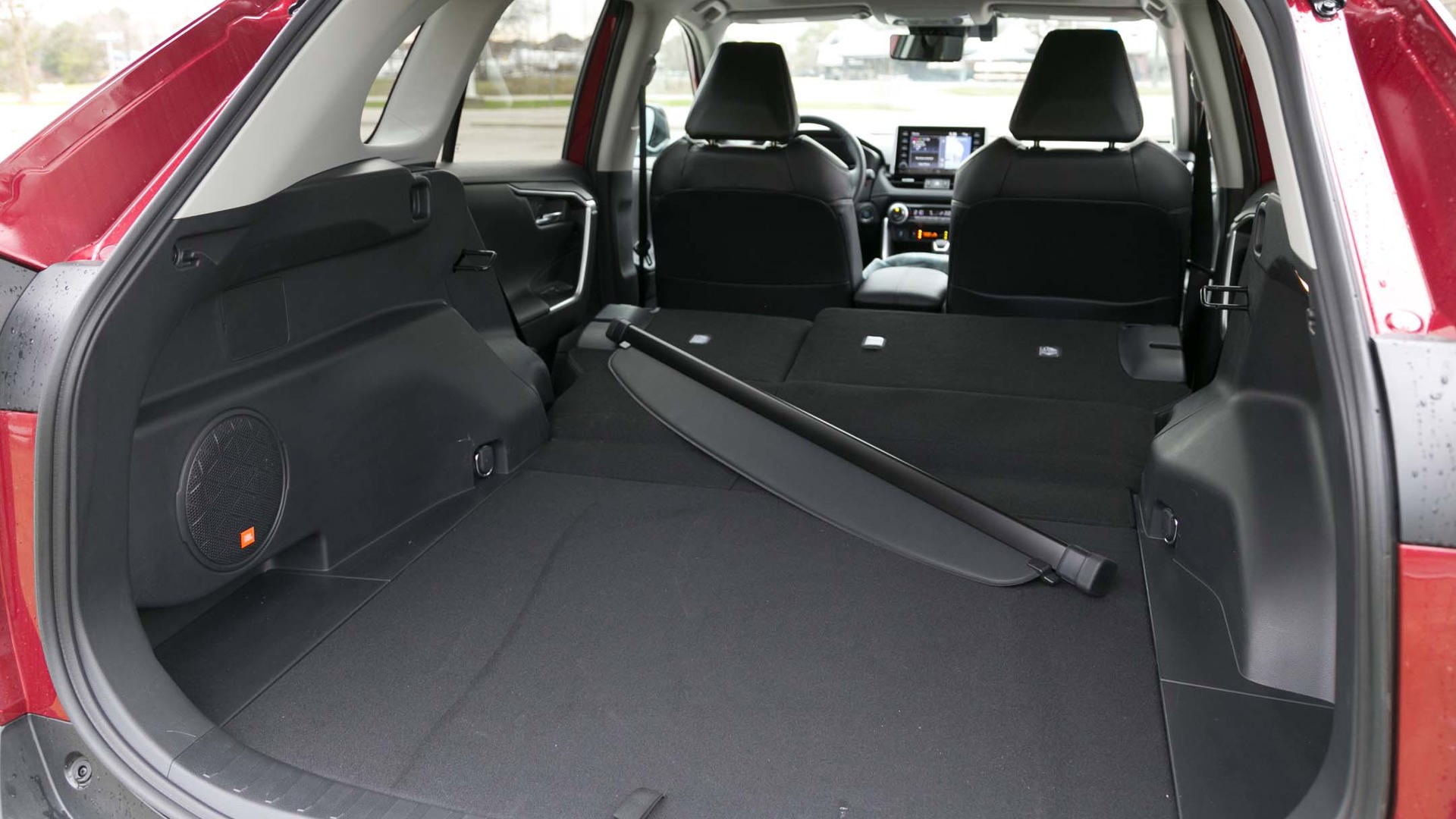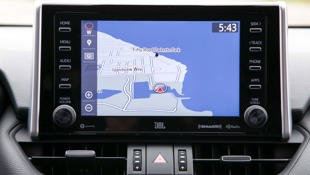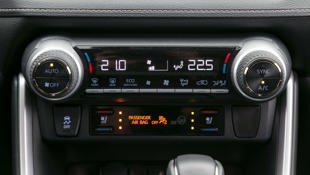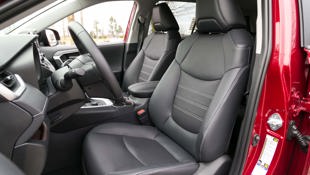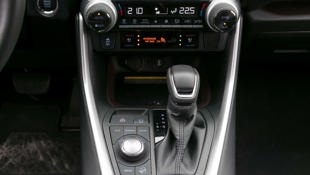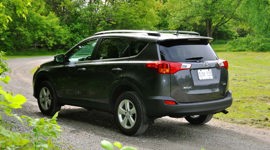 AutoTrader SCORE
AutoTrader SCORE
-
STYLING7/10
-
Safety8/10
-
PRACTICALITY8/10
-
USER-FRIENDLINESS8/10
-
FEATURES8/10
-
POWER7/10
-
COMFORT8/10
-
DRIVING FEEL6/10
-
FUEL ECONOMY7/10
-
VALUE7/10
Toyota’s perennial compact crossover is quickly becoming as much-loved a Canadian entity as hockey and Tim Hortons. The Woodstock, Ontario-built RAV4 is – and has been – wildly popular amongst Canadian drivers, with over 55,000 units sold in 2018 here in the Great White North. That was enough to earn the RAV4 top sales spot on a list of 32 compact and sub-compact crossovers for sale in Canada last year, narrowly beating out its Honda CR-V nemesis.
The 2019 Toyota RAV4 is all-new: It’s better equipped, more spacious and more powerful than the outgoing model. Curiously, though, its 2019 first quarter sales came in behind its rivals, suggesting that in this segment, consumers are spoiled for choice with no shortage of excellent alternatives.
Styling: 7/10
The most immediate improvement to this new RAV4 is one that becomes obvious even before climbing inside. While last year’s RAV4 wasn’t a bad-looking machine, the new one appears more grown up and muscular. The Trail trim is the most aggressive, paying homage (I suppose) to the lamentably long-gone FJ Cruiser, especially when finished in bright blue with that white roof treatment.
This tester was outfitted in the particularly handsome Limited trim featuring attractive 19-inch wheels and a front end that is unmistakably Toyota. The optional Ruby Flare Pearl paint is simply radiant in the sunlight.
Still, there are a lot of cuts, lines, angles, and shapes on every plane of the new RAV4, and it’s not what one would call glamourous per se, especially when measured against the sleek-looking Mazda CX-5.
User Friendliness: 8/10
Many of Toyota’s recent interior designs have subscribed to a busy, multi-angle, multi-textured theme, and the RAV4 is no exception. However, compared to some of the other models (C-HR, we’re looking at you), this application seems to work quite well.
The primary controls are very sensibly laid out with climate control knobs being easy to reach and adjust, even when driving wearing gloves or mitts. The knobs for volume and tuning of the audio system are smaller, but still a welcome sight in an era of haptic touch-panel buttons.
Likewise, the high-mounted infotainment screen, and the principal gauges and information screen are all legible with a quick glance, even at speed.
When parking, the bird’s-eye view depicted on the central screen helps place the RAV4 exactly where the driver wants, even in a tight spot.
Features: 8/10
This being the top-shelf Limited trim, it’s equipped with a selection of premium goodies like heated and cooled seats. The heated steering wheel was a welcome indulgence while testing the RAV4 during Ontario’s painfully late start to spring.
For 2019, Toyota has finally given up its stubborn aversion to Apple CarPlay smartphone integration. It’s a welcome addition, and well-executed in Toyota’s Entune 3.0 Premium audio system. The JBL sound system is decent but lacks the power and clarity of some rival systems. Navigation, satellite radio, and even various apps to check the weather, sports or stock prices, are integrated too; and the RAV4 provides three USB ports. Sadly, Android Auto connectivity is still not available with Toyota products.
While Toyota does offer a power sunroof at this trim level, it’s of a traditional size, and not a panoramic-style that lets rear seat passengers enjoy some light.
Safety: 9/10
The best way to survive a collision is to avoid it in the first place. An attentive driver with a good view of their surroundings is a great first step, and the RAV4 offers excellent visibility.
Commendably, Toyota has made its Safety Sense 2.0 suite standard fare on the RAV4. Functions like auto high-beams, pre-collision systems that detect pedestrians and bicycles, lane-tracing assist and dynamic cruise control all help do their part, even if the driver has a momentary lapse in attention.
Toyota has done an excellent job of programming its dynamic cruise control. The system begins accelerating as soon as the driver signals left and starts to make a move toward passing a slower vehicle ahead. Most systems don’t begin accelerating until the lane change is compete and the entire view forward is clear, creating a potential hazard for fast-approaching cars from behind.
Comfort: 8/10
The front and rear seats are swathed in black leather, offering reasonable under-thigh support, though very little lateral bolstering. They’re firm, but sufficiently comfortable, even for extended trips.
Rear-seat passengers will find more room here in the new RAV4 than in earlier generations, but Honda’s CR-V still offers more space, notably for legroom. There is no separate rear-seat climate control (though front seat passengers receive dual-zone control).
Practicality: 8/10
The primary reason SUVs have enjoyed such popularity is arguably due to their perceived practicality. Buyers likely believe having some decent ground clearance prevents getting stuck in the snow; but it also makes it easier for parents to load young kids into car seats, and for older folks to move their aging bones and joints into the car.
The RAV4 enables that convenience, plus it also provides a capacious cargo hold that makes moving bulky stuff easy.
Dimensionally, the RAV4’s cargo area is competitive with other models in the segment, though the CR-V does offer more space with rear seats up, or folded flat. What’s more, folding those seats requires a stretch, or a trip to the side doors to initiate the fold, whereas the CR-V provides cargo-area levers to easily drop the seats.
Sleek, integrated roof rails are provided on the RAV4, however, the cross-bars – which you’ll need to carry anything – cost extra.
Power: 7 / 10
On paper, Toyota’s naturally aspirated 2.5-litre four-cylinder engine delivers a noteworthy 203 horsepower and 184 lb-ft of torque. These numbers put the RAV4 ahead of the other naturally aspirated machines in the category, but pale in comparison to the turbocharged offerings in the Ford Escape or Mazda CX-5, which allow greater towing capacity at 907 kg, versus the RAV’s 680 kg.
What’s more, even though Honda’s diminutive 1.5L engine churns out less horsepower and torque, it feels much livelier when driven around town and when pulling away from a stop thanks to the turbo offering peak torque at far fewer revs than the Toyota.
Driving Feel: 6.5/10
Exacerbating the dearth of low-end torque, the RAV4’s throttle response in anything other than SPORT mode is pretty sluggish. What’s more, the eight-speed automatic, while very smooth, is programmed to race the Toyota to the tallest practical gear whenever possible, in the interest of saving fuel. This means it’s a near-constant fight for the engine to have enough revs to produce meaningful forward thrust, even on modest inclines.
The RAV4 handles about as well as its primary competitors, save for the spritely Mazda. The relatively soft suspension tuning produces significant nose-dive under braking, and a significant amount of body roll in the corners. Steering is electronically assisted and feels numb, offering little information about what the tires are doing. In fairness, however, our test car was still wearing some aggressive Bridgestone Blizzak winter rubber, which certainly dulls the senses.
Fuel Economy: 7.5/10
Most of the compact SUV segment achieve highway efficiency ratings in the mid-7s. The RAV4 ekes out the competition with a figure of 7.1 L/100 km. Its City and Combined ratings fall slightly behind the Honda CR-V and Subaru Forester. Like the Honda, the RAV4 has a very small fuel tank (55 L), resulting in frequent fill-ups, even though it’s a decently efficient machine. The RAV4 requires only regular unleaded.
Value: 7/10
Toyota offers the new RAV4 in no fewer than ten variations including front- and all-wheel drive, and hybrid options. This means that a bare-bones model rings in less than $30,000, while our top-of-the-line tester rang in over $40,000. Toyota doesn’t offer a massive list of expensive options the way some other manufacturers do, so this Limited trim is pretty much as pricey as it gets for a RAV4.
Still, comparably equipped models from nearly every other competitor manage to keep the MSRP under the $40K threshold, and some of those machines offer more compelling turbocharged powertrains.
Conclusion
The fundamentals of what has made the well-built RAV4 a success in the past still carry on with this new model. It’s a compact SUV that offers a competitive list of features, along with efficiency and functionality, making a strong case for being the best RAV4 yet. Still, there are more competitors to the RAV4 than ever before, and many of those present comparable quality, efficiency, and practicality, but with a more engaging driving experience, too.
| Engine Displacement | 2.5L |
|---|---|
| Engine Cylinders | I4 |
| Peak Horsepower | 203 hp @ 6,600 rpm |
| Peak Torque | 184 lb-ft @ 5,000 rpm |
| Fuel Economy | 9.2/7.1/8.3 L/100 km city/hwy/comb |
| Cargo Space | 1,059/1,976 L seats down |
| Model Tested | 2019 Toyota RAV4 AWD Limited |
| Base Price | $40,690 |
| A/C Tax | $100 |
| Destination Fee | $1,815 |
| Price as Tested | $42,860 |
|
Optional Equipment
$255 – Ruby Flare Pearl paint $255
|
|
